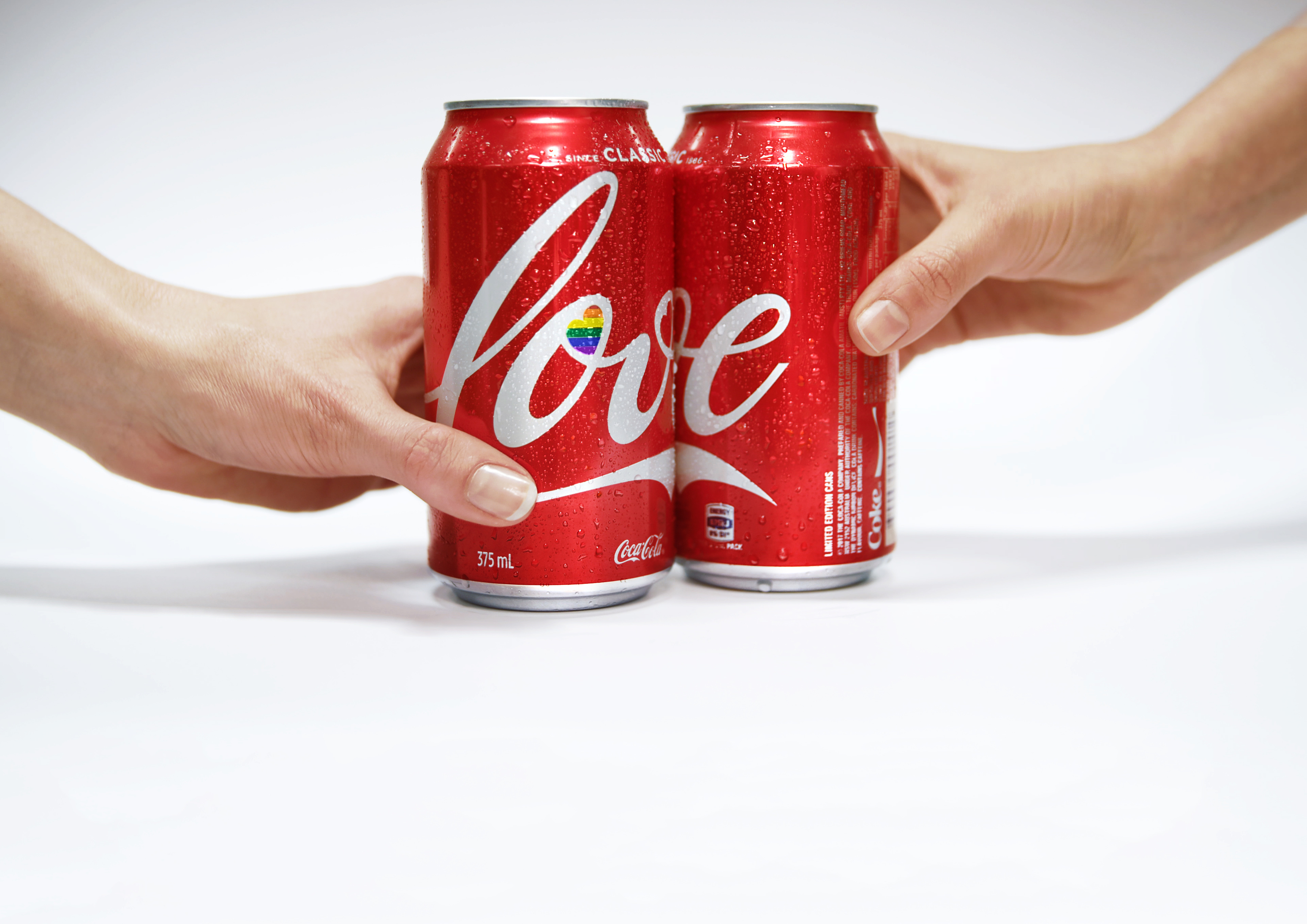
Sunday, December 15, 2019
week three: fake advertisement
The other day, I was watching hulu and THIS AD randomly popped up. I looked up from my phone and watched it all the way through, and I was almost crying at the end I thought it was so cute. I immediately thought that I should use it for my media blog, as in thirty seconds, the ad made me want to donate my entire savings account to the Raley's Food for Families program. I assumed the ad had to be telling some inkling of truth, and must give food to families in need. I was convinced that if I could make a family as happy as they had been in the Raley's commercial just by donating to Food for Families, then why not donate? Why not sell my soul, even? Following getting made fun of my brother for getting teary eyed at a hulu ad, I looked up the ad on Youtube to watch the full version. I read the comments of the video on Youtube, and more than half of them were written by people claiming to be Raley's employees. There were four or five long comments written by different people saying not to donate to the program because the money didn't end up going to the program - it ended up in the Raley's cash register. Seeing these comments that I assume are being truthful about where the money goes made me wonder just how much advertisement manipulation I've been subjected to in my time on earth. If this ad is a complete lie, and basically convinced me to sell my soul to Raley's with 30 seconds of a sad song and adorable kids, how many other companies that I'm convinced do good for the world are actually big fat fakers?


Monday, December 9, 2019
(free choice) week two: breaking bad
This past week and over the weekend, I've been watching the Netflix show Breaking Bad. In this show, I've realized that there is a glorification of the production and use of drugs (specifically meth and weed). This show follows a high-school science teacher suffering from lung cancer as he starts his own enterprise cooking top-tier meth and selling it in order to pay for his treatment and leave money for his family. Although quite often in the show he suffers negative consequences as a result of his actions, some things portray production and use of this drug as beneficial and much less harmful than they are. Every time a character on the show is pictured doing a drug, very little happens. For almost every scenario, if you were to take out the drug scene and just show the effects they could have done something as mundane as eat a pizza that made them a little nauseous; not once (so far) has an overdose been pictured, and most often the only pictured negative effect is nervousness or hyper-ness. In addition to this, the true dangers of additions are completely glossed over and ignored; no character so far has gone beyond 'casual use,' and suffered in any way from an inability to stop using, which doesn't happen in real life. Overall, I love this show- but I have to acknowledge that it does not present an accurate or realistic picture of drug production or use.
(the persuaders) week two: lovemarks
I was watching a compilation of this year's Superbowl ads the other day and I found this one. It's an advertisement for Coca-Cola soda. In the ad, nothing regarding the quality of the soda is advertised, and this ad instead highlights that worldwide, everyone enjoys Coke the same way no matter who they are. It promises the consumer that if they drink Coke, they can be a part of this loving community that exists despite the differences its members have, and even emphasizes that these differences are what makes the Coca-Cola drinker community so desirable. This advertisement proves that Coca-Cola has made themselves a 'love-marked' brand. The actual product being sold is not advertised at all; the only thing the watcher would know about Coca-Cola's product from watching this ad is that it is a brown liquid that comes in bottles of all shapes and sizes. This means that whoever is trying to sell Coke is relying on the fact that the watcher probably already knows what Coke is, and doesn't need to be convinced of the quality of the product, as they're already familiar with it. The advertiser's aim that people who see this ad will believe that Coca-Cola soda will offer them a sense of community, love and acceptance. This is how all Coke ads are; they rely on the fact that people world-wide are already familiar with their product, and instead promise the consumer these feelings of love and community, without ever actually describing their product. Since Coke is one of the most successful and well-known brands in the world, their strategy of promising support and acceptance in their advertisements has obviously worked, and created a market of Coke consumers that buy Coke only on the basis of acquiring the feelings in the ads, and not on getting a quality product. This shows that Coca-Cola advertisements have successfully transcended from traditional advertisements that promise a superior quality products, to advertising emotions, and in doing so have made themselves a brand with a special spot in their customer's hearts.


Tuesday, December 3, 2019
week one: two news articles language analysis
12/2/19
For my topic, I chose to look at articles discussing Trump's impeachment process. I found articles from The Daily Wire and CNN. In the CNN article by Jeremy Herb, he uses exaggerated descriptions based on his own opinions and assumptions to convince the reader that the Republican stance on the impeachment is invalid, and that his own opinion is trustworthy. In the article, it says,"the (Republican) report largely ignores or downplays testimony from career officials who raised serious questions and concerns about the conduct of the President and some of his top aides." The author's descriptions of the career official's testimonies and how they were treated in the report are exaggerations and a projection of his own opinion. By describing the career official's concerns as 'serious,' the author is trying to convince the reader that the career official's testimony has value and is valid, but this description is merely the author's own opinion, and does not truly tell the reader anything about the testimony. Similarly, the author's description of the report 'largely ignoring' this testimony is his own opinion. What one considers 'large' is all dependent on their perspective. He inserts these opinions into his writing and presents them as fact; they are exaggerations that paint the Republican report out to be a deceitful cover-up operation that has entirely disregarded the career official's valid testimony, and in turn convinces the reader that the Republican report is invalid and the testimony incriminating Trump is trustworthy. In the Daily Wire article, the author, Josh Hammer, exaggerates the democratic defense, and uses to language to make their claims seem silly, in order to convince the reader the claims against Trump are invalid. He says that, "it is far better... to make the substantive argument that attaching strings to the doling out of politically unpopular U.S. taxpayer-funded foreign aid simply cannot rise to the level of an impeachable offense." In this quote, he describes Trump's behaviors as 'politically unpopular foreign aid' that does not qualify as impeachable behavior. This description uses language that makes the behaviors Trump did exhibit appear in the more harmless and unsophisticated way they possibly can, and in turn convinces the reader to believe it is silly to pursue punishment for behaviors that aren't immoral or criminal.
 VS.
VS. 
My sources: 1) Daily wire article https://www.dailywire.com/news/impeachment-wire-the-latest-on-the-effort-to-impeach-president-trump 2) CNN article https://www.cnn.com/2019/12/02/politics/house-republican-response-impeachment-inquiry/index.html
(free choice) week one: chemistry tiktok
12/2/19
The other day, I was scrolling through the app TikTok, and I came across this video (click the link to see it). In this video, the dancing guy labeled 'atom' is supposed to represent a happy atom, and the atom is happy because it has acquired the eighth valence electron. I didn't get the joke, but the 200,000 likes on the video told me that 200,000 other kids my age in chemistry got the joke. 200,000 other kids actually knew the chemistry. 200,000 other kids my age actually understand why atoms dance when they acquire the eighth valence electron, and I didn't. I'd been left with nothing to do but forage through the comments to try and find out what a valence electron was. Within twenty seconds of watching this video, I was frustrated and sad. This video reminded me of just how bad I am at chemistry and just how much I'm struggling in Ms. Gluckman's class. We're learning about those exact things in class: valence electrons, orbitals, and periodic order, yet I still didn't get what this video. Not knowing something that every other person on TikTok seemed to understand served as upsetting proof that I am not destined to work in a field that involves chemistry, and that I probably won't do very well on our next test.

This is me:

l
Monday, November 18, 2019
week zero: my relationship with media
11/18/19
I'm heavily reliant on and probably overexposed to some types of media, but I'm oblivious to many other types of media. I use social media 24/7, and at this point it's my main and potentially my only source of news and information. I never really watch TV, or read the news, or search for current even articles online, so I never get any exposure to other types of media. As a result of this imbalance, the information I know about the world is probably skewed; having heavy exposure to any specific type of media leads to only specific information and perspectives being presented, and these perspectives are the ones I've most likely come to adopt .

I'm heavily reliant on and probably overexposed to some types of media, but I'm oblivious to many other types of media. I use social media 24/7, and at this point it's my main and potentially my only source of news and information. I never really watch TV, or read the news, or search for current even articles online, so I never get any exposure to other types of media. As a result of this imbalance, the information I know about the world is probably skewed; having heavy exposure to any specific type of media leads to only specific information and perspectives being presented, and these perspectives are the ones I've most likely come to adopt .

Subscribe to:
Comments (Atom)
